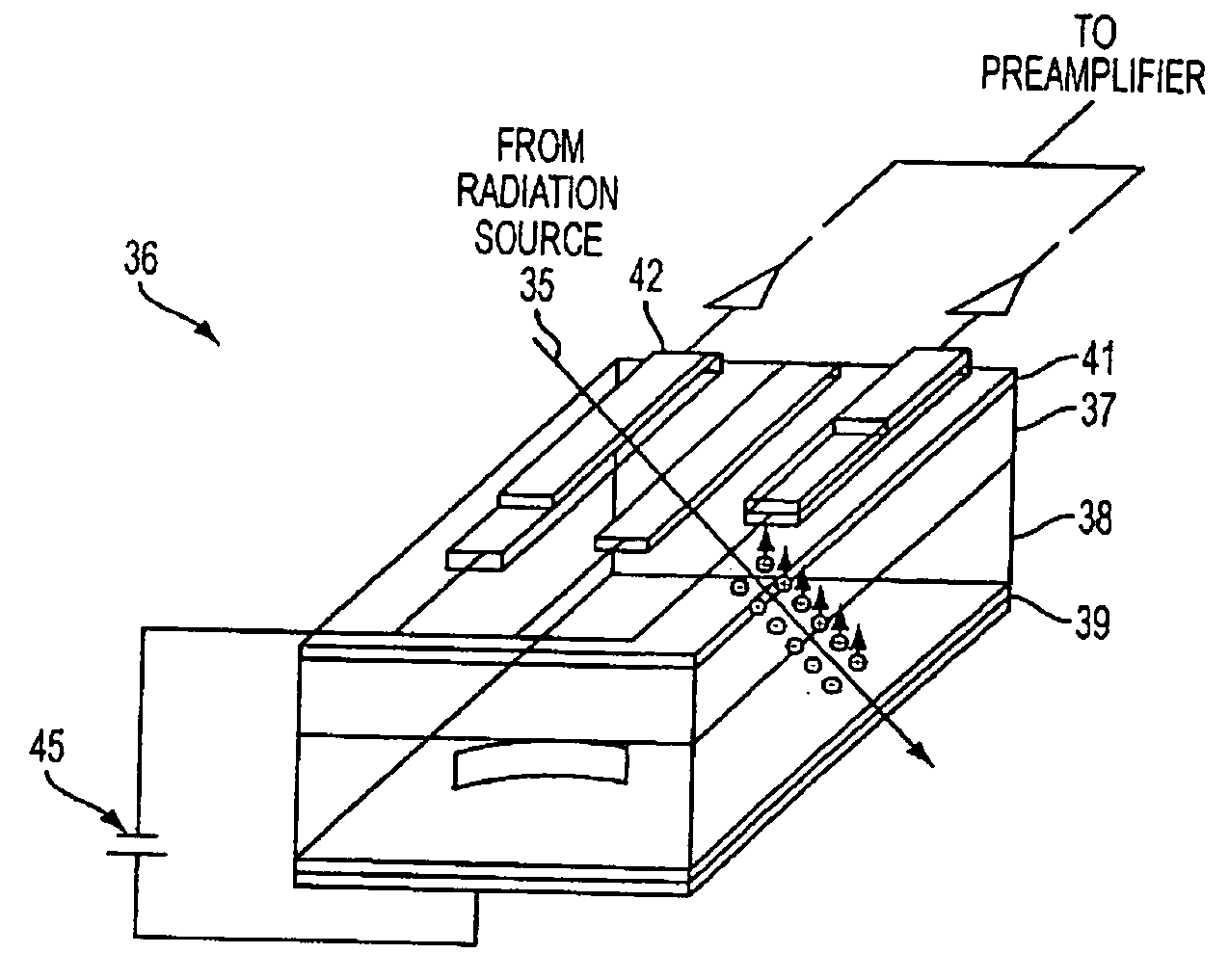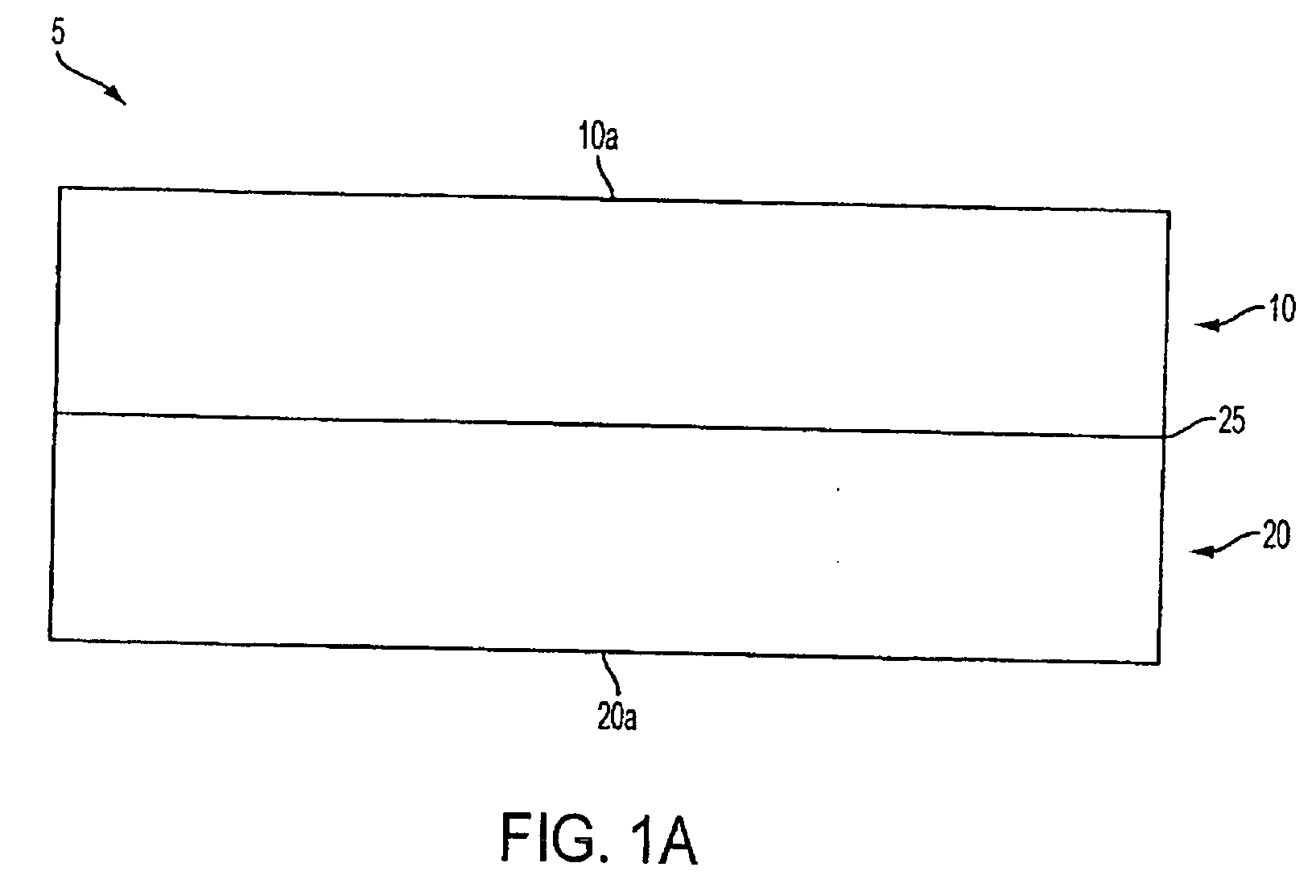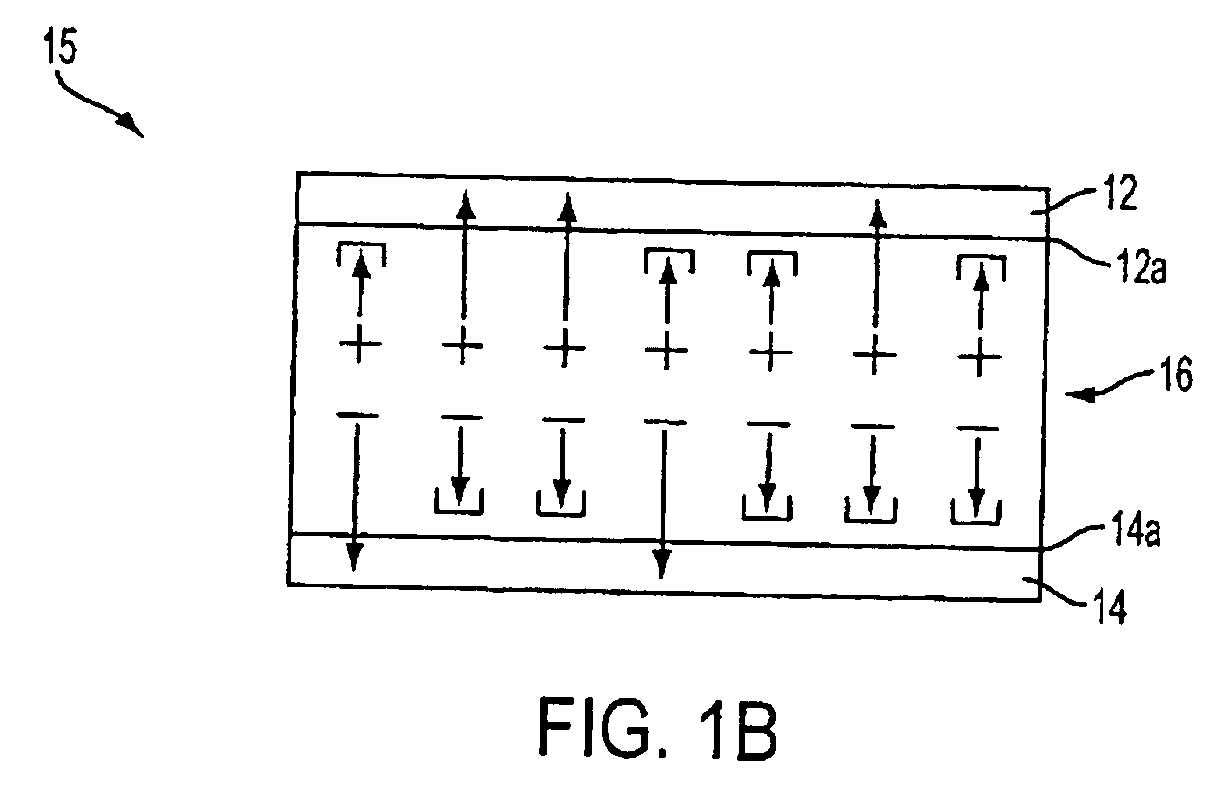Wafer bonded silicon radiation detectors
a radiation detector and silicon technology, applied in the field of radiation detectors, can solve the problems of time-consuming and expensive to drift thick si(li) detectors, difficult to operate intrinsic detectors, and high cost of manufacturing double-sided detectors
- Summary
- Abstract
- Description
- Claims
- Application Information
AI Technical Summary
Problems solved by technology
Method used
Image
Examples
first embodiment
[0041] The direct wafer bonded silicon radiation detector as described above can be employed in a plurality of embodiments as will now be described. A first embodiment is illustrated in FIG. 5 illustrating a pixellated CMOS or non-CMOS detector 55. The detector is comprised of a pixellated top portion 60a disposed on wafer 60, which is direct wafer bonded to wafer 70 which is a thick, high resistivity semiconductor wafer.
[0042] In operation, a radiation source 56 emits a particle, gamma ray or x-ray, or other ionizing particles for example, at the under portion 70a of detector 55. The interaction of the emitted radiation and the voltage causes electron-hole pairs to be formed within detector 55. A voltage is applied to the detector 55, via voltage source 45. The electrons are then drifted to a first side 60b of wafer 60 through the pixellated surface 60a of wafer 60. By contrast, the holes are drifted to a second side 70b of wafer 70. The drifting of the electrons and holes can be r...
second embodiment
[0043] A second embodiment is depicted FIG. 6. This embodiment includes a double-sided strip surface on detector 75. The detector includes two relatively thin CMOS or non-CMOS device wafers 78 and 80 bonded together via the direct wafer bonding method mentioned above. The upper surface of wafer 78 comprises a plurality of conventional strip detectors 78a and is coupled to voltage source 45, and the lower portion of wafer 80 also comprises a plurality of strip detectors 80a. The strips 78a and 80a are positioned in an orthogonal pattern. Detector 75 preferably provides position-sensitive measurements employing strip detectors 78a and 80a for hard X-rays or penetrating particles, but with fewer readout channels required compared to the detector in FIG. 4.
[0044] The operation of detector 75 is similar to that of the detector 55 of FIG. 5. However, detector 75 employs strip detectors 78a and 80a, in a conventional fashion, in order to determine position information of the total drifted ...
third embodiment
[0045] A third embodiment depicted in FIG. 7. This device is a double-sided strip detector 85 made from two relatively thin CMOS or non-CMOS wafers 87, 89 direct wafer bonded on to a first side 92a and a second side 92b of a thick, high resisitivity semiconductor wafer 92. Conventionally, electrons would not be expected to diffuse through an interface of a thick high resistivity semiconductor wafer that has been bonded to another wafer. However, due to the unique properties of the wafer bonding process, electrons are able to diffuse through interfaces bonded through this process.
[0046] In operation, a gamma ray (not shown) is directed toward detector 85, a voltage, via voltage source 45 is applied to one of the thin CMOS or non-CMOS wafers 87 and 89. Electrons are drifted towards the direction of a surface of one of the wafers 87 and 89, whereas holes are drifted to the opposite directions of the electrons. The strip detectors on the surface of wafers 87 and 89 are then able to dete...
PUM
 Login to View More
Login to View More Abstract
Description
Claims
Application Information
 Login to View More
Login to View More - R&D
- Intellectual Property
- Life Sciences
- Materials
- Tech Scout
- Unparalleled Data Quality
- Higher Quality Content
- 60% Fewer Hallucinations
Browse by: Latest US Patents, China's latest patents, Technical Efficacy Thesaurus, Application Domain, Technology Topic, Popular Technical Reports.
© 2025 PatSnap. All rights reserved.Legal|Privacy policy|Modern Slavery Act Transparency Statement|Sitemap|About US| Contact US: help@patsnap.com



